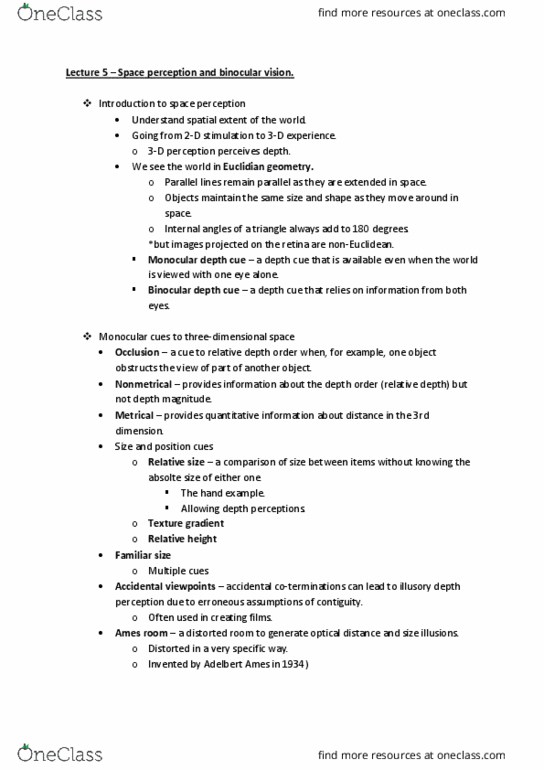PSY280H1 Lecture 4: Lecture 4 - colors.
PSY280H1 verified notes
4/13View all
Document Summary
A bit on agnosia (object blindness) and prosopagnosia (face blindness: lesion in neuropsychology. : to destroy a section of the brain. Development of object perception: assess object recognition in infants. A stimulus becomes a habituation procedure when it"s no longer surprising due to previous exposure. And a novel stimulus will be more surprising than the old one: measure viewing time as an indication of something being interesting, novel or surprising. Basic principles of color perception: color a psychophysical property rather than a physical property. Most light sources emit a broad spectrum of wavelengths vary from 400-700nm. (short long) 700nm is red in the electromagnetic spectrum. Trichromacy: detection we have to be able to detect the light first. There"re 4 types of photoreceptors in the retina: s-cones (420nm) short wavelengths ( blue cones, m-cone (535nm) middle wavelengths ( green cones, l-cones (565nm) long wavelengths ( red cones, rod (black) Prism a transparent glass that breaks white lights into different colors.




